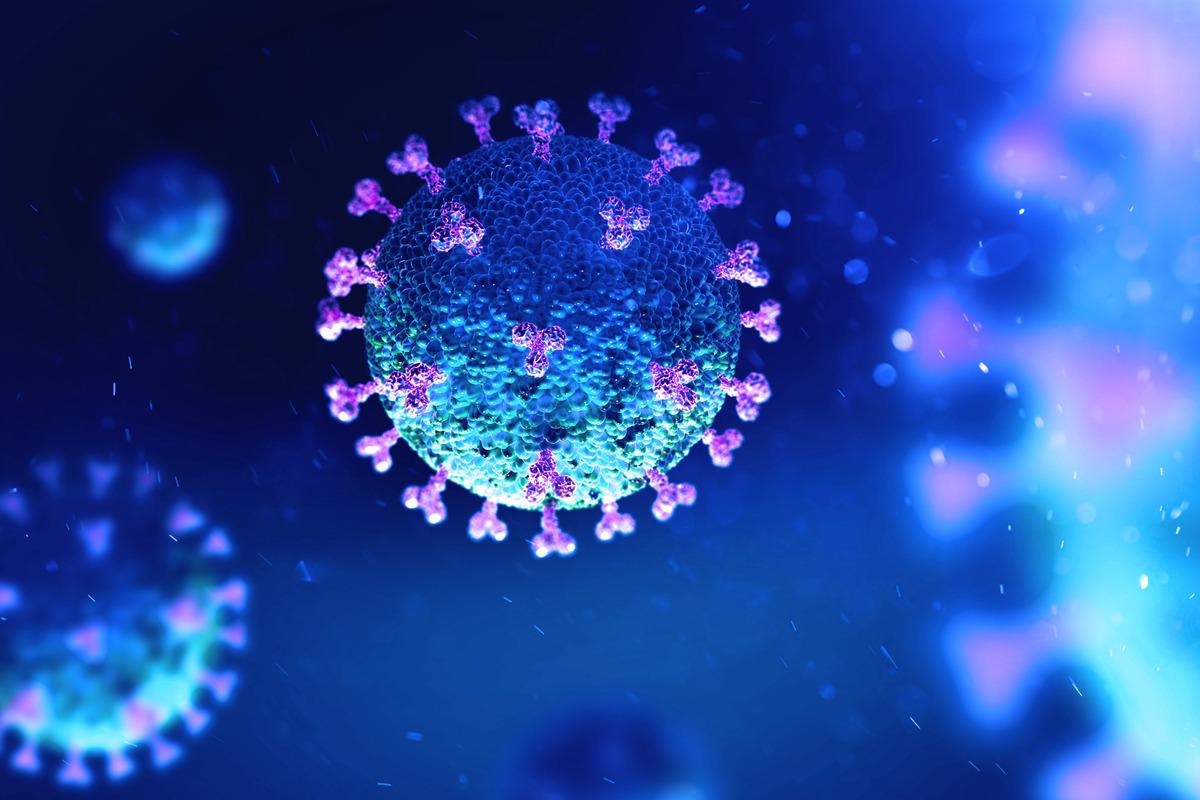In a recent article posted to the bioRxiv* preprint server, scientists demonstrated the use of 2-deoxy-D-glucose (2-DG) as a wide-spectrum antiviral agent targeting viruses such as severe acute respiratory syndrome coronavirus 2 (SARS-CoV-2).

Background
Endemic human coronaviruses (HCoVs) and rhinoviruses (RVs) are well-known causative agents of human acute respiratory tract infections. In healthy individuals, they are typically self-limiting, remaining limited to the upper respiratory tract. Nevertheless, because the viruses circulate seasonally and spread rapidly, they have high yearly incidence rates. Moreover, these viruses can induce severe morbidity in the elderly, immunocompromised individuals, and children.
CoVs and RVs upregulate metabolic processes in host cells, such as glycolysis, to satisfy their bioenergetic requirements for fast multiplication. This dependence of CoVs and RVs, and probably other viruses on human glucose metabolism for replication, makes them an attractive target for potent antiviral therapy development. Of note, prior studies have shown that 2-DG, a stable analog of glucose, inhibits viral multiplication by reversing virus-induced host cell metabolic reprogramming.
About the study
In the current study, the researchers studied the antiviral efficacy of 2-DG towards the minor- and major-receptor group RVs in epithelial cells, such as primary nasal epithelial cells in humans (HNECs), the preliminary site of RV multiplication. Simultaneously, the team investigated the influence of glucose on the antiviral efficacy of 2-DG and intracellular kinetics of 2-DG.
In addition, the scientists evaluated both the positive-sense single-stranded ribonucleic acid ((+)ssRNA) and the template negative-sense ssRNA ((-)ssRNA) segments to in-depth understand the inhibitory impact of 2-DG on the replication cycle of RV. The investigators also examined the effect of 2-DG on RV-mediated apoptosis. Finally, they tested 2-DG's antiviral efficacy against endemic CoVs and the SARS-CoV-2 pandemic strain.
The team determined whether reversing virus-mediated metabolic reprogramming with 2-DG therapy impacted viral RNA replication and its ability to tackle respiratory viral infections. Altogether, the scientists employed a host-directed method to mitigate CoV and RV infections by using 2-DG in this research.
Results
Collectively, the study results demonstrated that 2-DG treatment reduced the multiplication of all major- and minor- receptor cluster isolates of RV in Henrietta Lacks (HeLa) Ohio cells under standard culture conditions and in HNECs. Lower glucose levels enhanced 2-DG-induced RV replication inhibition, indicating that 2-DG was more effective in physiological conditions. Based on these findings, 2-DG2-DG might demonstrate an even greater antiviral activity across therapeutic target tissues.
2-DG was phosphorylated to 2-DG6P in the cell, resulting in an intracellular accumulation. After brief incubation of the cells and 2-DG, 2-DG6P was detected in HNEC and HeLa Ohio cells for several hours.
2-DG considerably decreased both the genomic (+)ssRNA and the template (-)ssRNA, presumably the source of the measurable extracellular viral RNA drop. These data hint at a decrease in viral RNA replication and the quantity of virus released due to 2-DG. Consistent with this, titrating the released virus in HeLa Ohio cells revealed a drop in viral load. Further, the team discovered that 2-DG had a protective impact on HeLa Ohio cells by substantially lowering virus-mediated cell death in succeeding analysis.
Treatment of pandemic and endemic CoVs with 2-DG reduced viral load in a dose-reliant manner. Compared to RV viral load data, small concentrations of 2-DG were adequate to elicit a substantial long-term decrease in viral load in both pandemic and endemic CoVs. The authors mentioned that variations in cell culture models might be responsible for the discrepancy between CoV and RV.
Conclusions
According to the study findings, the glycolysis inhibitor 2-DG suppressed the major- and minor-receptor cluster RV replication in a dose-reliant manner. The scientists discovered that 2-DG inhibited viral RNA synthesis on both the negative and positive strands, resulting in fewer offspring viruses and a reduction in RV-mediated apoptosis.
2-DG demonstrated a strong antiviral impact in tissue culture under physiological glucose concentrations. Nonetheless, further research in models similar to the physiologic settings was required to test this theory. Furthermore, an analysis of 2-DG's intracellular dynamics indicated that the active intermediary, 2-DG6P, was retained for various hours within the cell. The team stated that additional investigations were needed to determine if 2-DG has a role in the formation of defective virions among enveloped viruses.
Overall, the present concurrent investigation of the effect of 2-DG, a glucose analog, on endemic HCoVs and pandemic SARS-CoV-2 showed a considerable decrease in viral load. In vitro, 2-DG decreased RV RNA multiplication and lowered RV-mediated apoptosis. Additionally, in vitro, 2-DG showed enhanced inhibitory action against RV under physiological glucose levels. 2-DG also reduced the viral load of endemic and pandemic CoVs in vitro. These findings indicated that 2-DG could be a wide-spectrum antiviral.
*Important notice
bioRxiv publishes preliminary scientific reports that are not peer-reviewed and, therefore, should not be regarded as conclusive, guide clinical practice/health-related behavior, or treated as established information.
- Laxmikant Wali, Michael Karbiener, Scharon Chou, Vitalii Kovtunyk, Adam Adonyi, Irene Goesler, Ximena Contreras, Delyana Stoeva, Dieter Blaas, Johannes Stoeckl, Thomas R Kreil, Guido A Gualdoni, Anna-Dorothea Gorki. (2022). Host-directed therapy with 2-Deoxy-D-glucose inhibits human rhinoviruses, endemic coronaviruses, and SARS-CoV-2. bioRxiv. doi: https://doi.org/10.1101/2022.05.24.493068 https://www.biorxiv.org/content/10.1101/2022.05.24.493068v1
Posted in: Medical Science News | Medical Research News | Disease/Infection News

Written by
Shanet Susan Alex
Shanet Susan Alex, a medical writer, based in Kerala, India, is a Doctor of Pharmacy graduate from Kerala University of Health Sciences. Her academic background is in clinical pharmacy and research, and she is passionate about medical writing. Shanet has published papers in the International Journal of Medical Science and Current Research (IJMSCR), the International Journal of Pharmacy (IJP), and the International Journal of Medical Science and Applied Research (IJMSAR). Apart from work, she enjoys listening to music and watching movies.
Source: Read Full Article
